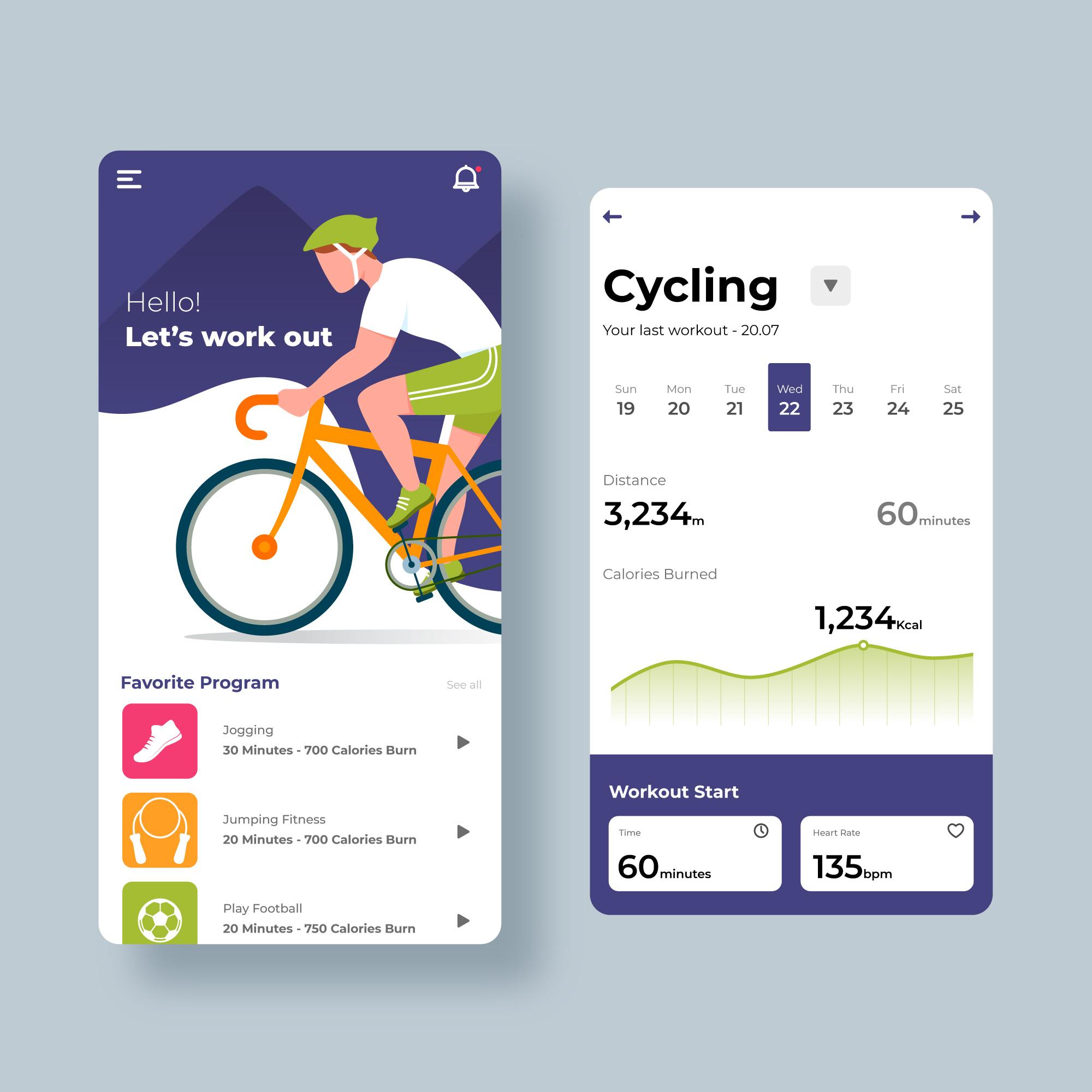Role of Virtual Reality (VR) in Fitness App Development
Virtual reality (VR) has caused a revolution in numerous industries, and it has also made a significant impact on the development of fitness applications. As we explore the intersection of technology and wellness, the integration of VR into fitness apps has gained significant attention and praise. In 2024, VR technology will reshape how individuals interact with their workout routines and pursue their fitness goals.
The Evolution of Fitness Apps
Historical Perspective
Over the years, fitness apps have undergone a remarkable transformation, evolving from simple trackers to comprehensive platforms offering personalized workout routines, nutritional guidance, and community support.
Current Trends
In the present landscape, fitness apps have become indispensable tools for health-conscious individuals, with a myriad of options catering to various preferences and fitness levels.
Integration of Virtual Reality (VR)
Advantages and Potential
The integration of VR technology into fitness apps offers unparalleled advantages, providing users with immersive workout experiences that transcend traditional methods.
Challenges and Limitations
Despite its potential, the widespread adoption of VR in fitness apps faces certain challenges, including technological barriers and concerns regarding accessibility.
Benefits of Virtual Reality in Fitness App Development
Immersive Workout Experiences
With VR, users can escape the confines of their surroundings and immerse themselves in virtual environments designed to enhance their workout sessions.
Enhanced Motivation and Engagement
VR simulations offer a dynamic and engaging approach to fitness, motivating users to push their limits and stay consistent with their exercise routines.
Personalized Training Programs
By leveraging VR technology, fitness apps can tailor workout programs to suit individual preferences, goals, and fitness levels, thereby optimizing the user experience and ensuring long-term adherence.
VR Technology in Health Monitoring
Real-Time Feedback
VR-enabled fitness apps provide users with real-time feedback on their performance, allowing for adjustments and improvements during each workout session.
Data Tracking and Analysis
Through integrated sensors and tracking mechanisms, VR fitness apps collect valuable data on user behavior, allowing for comprehensive analysis and insights into health and fitness trends.
Addressing User Concerns
Motion Sickness and Discomfort
One of the primary concerns associated with VR usage in fitness apps is the potential for motion sickness and discomfort, necessitating careful design considerations and user accommodations.
Accessibility and Affordability
Despite advancements in technology, accessibility and affordability remain significant barriers to widespread adoption, underscoring the need for continued innovation and market expansion.
Future Prospects and Innovations
Predictions for VR Technology in Fitness Apps
Looking ahead, the future of VR in fitness app development holds immense promise, with anticipated advancements in hardware capabilities, software integration, and user experience enhancements.
Emerging Trends and Possibilities
From gamification elements to social interactions and virtual coaching, the possibilities for innovation within the realm of VR fitness apps are limitless, paving the way for transformative experiences and outcomes.
Impact on User Experience (UX)
User Interface Design Considerations
Effective UX design is crucial in maximizing the potential of VR fitness apps, emphasizing intuitive navigation, immersive visuals, and seamless interactions.
Creating Seamless Interactions
By prioritizing user-centric design principles, developers can create VR experiences that seamlessly integrate into users’ lives, fostering long-term engagement and satisfaction.
Marketing Strategies for VR Fitness Apps
Target Audience Identification
Understanding the demographics, preferences, and motivations of target audiences is essential in crafting tailored marketing strategies that resonate with potential users.
Promotional Campaigns and Channels
From social media outreach to influencer partnerships and app store optimization, effective marketing campaigns play a pivotal role in driving awareness and adoption of VR fitness apps.
Conclusion
In conclusion, the role of virtual reality (VR) in fitness app development is poised to redefine how individuals approach health and wellness in 2024 and beyond. With its ability to deliver immersive workout experiences, personalized training programs, and real-time health monitoring capabilities, VR technology offers unprecedented opportunities for enhancing motivation, engagement, and overall fitness outcomes. While challenges such as motion sickness and accessibility persist, ongoing advancements and innovations continue to propel the evolution of VR fitness apps, promising a future where technology seamlessly integrates into every aspect of our lives.


